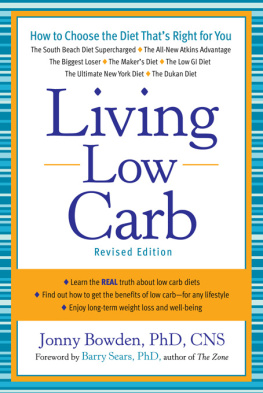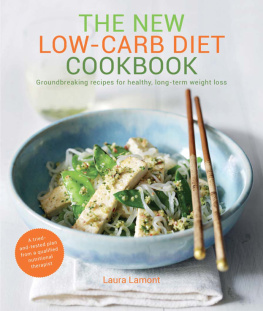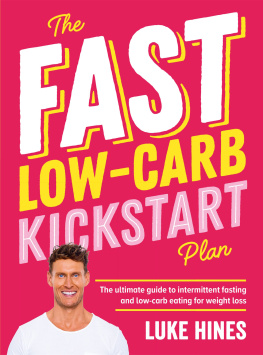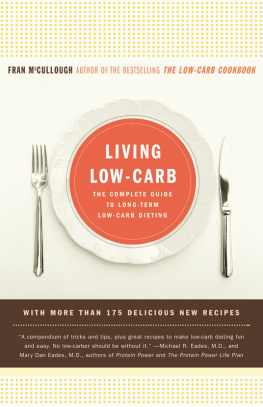Two sets of thanks here.
First to my personal brain trust who gave so generously of their time. If this book is good, its largely because of their stunning knowledge base.
Stacey J Bell, PhD, Suzanne Bennett, DC, C. Leigh Broadhurst, PhD, Colette Heimowitz, MSc, Mary Enig, PhD, Joseph Evans, PhD, Oz Garcia, PhD, John Hernandez, MD, Malcolm Kendrick, MD, Ann Louise Gittleman, PhD, CNS, Mark Houston, MD, MS, Susan Lark, MD, David Leonardi, MD, Shari Lieberman, PhD, CNS, Linda Lizotte, RD, Lyle McDonald, Joe Mercola, DO, Liz Neporent, MS, Harry Preuss, MD, Uffe Rasvnskov, MD, PhD, Donald S Robertson, MD, MSc, Ron Rosedale, MD, Alan Schwartz, MD, Diana Schwarzbein, MD, Barry Sears, PhD, Stephen Sinatra, MD, Allan Spreen, MD, Anton Steiner, MD, Jeff S Volek, PhD, RD
Very Special Thanks:
To Dr. Anton Steiner for sharing his wealth of knowledge about the neurochemistry of pharmaceuticals and his invaluable help with the section on weight loss medications
To my dear friend Dr. Dave Leonardi, who put up with my endless medical questions at all hours of the day and night and served as my personal Merck Manual of Diabetes
To the brilliant Dr. C. Leigh Broadhurst, a walking encylopedia of biochemistry and nutrition, who generously read and tweaked entire sections
To Dr. Mary Enig, for making sure I knew my fats
To Dr. Mary Vernon, a great pioneer and generous dispenser of knowledge and compassion who is a living example of speaking truth to power
To Dr. Jay Wortman, whose terrific work served as the basis for the Big Fat Diet chapter and who generously contributed to this book
To Dr. Jeff Volek, who is always ready with an answer and response to even the most inane questions, and whose meticulous research contributes so much to all of us concerned with diet and health
To Dr. Eric Westman, a great researcher and wonderful human being
To Dr. Eric Kossoff, who was kind enough to detail his pioneering work in using the ketogenic diet with children and to patiently answer all my questions
To Dr. Larry McCleary, my go-to neurosurgeon whose generosity and availability is matched only by his stunning intellect and encyclopedic knowledge
To Drs. Michael and Mary Dan Eades, who continue to dazzle me with their brilliance as well as their generosity and patience and whom I am blessed to say I can always count on
And a really special general principles thanks to Robert Crayhon, MS and Jeffrey Bland, PhD, who have spent their professional lives making a difference by educating physicians, nutritionists, chiropractors and other health practitioners, challenging their boundaries and expanding their horizons.
They certainly did mine.
And second to my familychosen and otherwisethe special people in my life without whom I might have still written books, but without whom I would not be who I am:
Aleta St. James, A. Waxman, Allegra Bowden, Anja Christy, Ann Knight, Cadence Bowden, Cassandra Creech, Christopher Duncan, Danny Troob, Elliott Bowden, Emily Christy Bowden, Glen Depke, Jeanine Tesori, Jeffrey Bowden, Kelly Wixted, Kimberly Wright, Lauree Dash, Lee Knapp, Liz Neporent, Lynn Pentz, Max Creech-Bowden, Molly Fox, Nancy Fiedler, Oliver and Jennifer, Oz Garcia, Pace Bowden, Peter Breger, Randy Graff, Richard Lewis, Scott Ellis, Sky London, Susan Wood Duncan, Tigerlily Creech-Bowden, Vivienne Bowden, Woodstock Bowden
As always, to Howard, Robin, Fred, Gary and Artie for putting a smile on my face every day for nearly fourteen years.
To Werner Erhardwherever you are, I love you and can never begin to repay you for what youve contributed to my life.
To the writers who taught me everything I know about writing, especially William Goldman (who could make the tax code interesting), and Robert Sapolsky, the greatest living science writer in America.
And a warm thanks to my first agent, Linda Konner, who put me on the map.
And to my current (and future) agent, Colleen OShea, who keeps me there.
And to the first editor of this book, Susan Lauzau, who had the patience to allow me to rant and rave about every comma change, most of which she was right about anyway And to the editor of the new expanded edition, Kate Zimmermannditto!
And especially to Michael Fragnito, who had the vision to imagine this book, the editorial skills to shape it, and an unfettered belief in me that allowed me to do the best work Ive ever done
And to the superstar of publicists, who does more on an off-day than most people do on their best, Heidi Krupp of Krupp Kommunications, and her entire staff, especially Chris Capra
Also to the support team at Barnes and Noble, especially Lindsay Herman And to my mother, Vivienne Simon Bowden.
And a very special thanks to Dr. Ann Knight who knows why.
The History and
Origins of
Low-Carb Diets
T he first bona fide low-carb diet book came out in 1864, and it happened only because William Banting thought he was going deaf.
Banting was a prosperous London undertaker of 66 who was so overweight that he couldnt tie his own shoelaces. At 5 feet 5 in his stocking feet, he weighed in at 202 pounds and was so fat that he had to walk downstairs backward. On top of that, his eyesight was failing and he was having problems with his hearing. In August 1862, Banting took himself to an ear, nose, and throat surgeon named Dr. William Harvey, who examined him and promptly decided that Bantings problem wasnt deafness; it was obesity. His fat was pressing on his inner ear. Heres what Banting was eating: bread and milk for breakfast, or a pint of tea, with plenty of milk and sugar, and buttered toast; meat, beer, and much bread and pastry for dinner; more bread and milk at tea time; and a fruit tart or bread and milk for dinner.
Harvey promptly put Banting on a diet, and by December 1862 Banting had lost 18 pounds. By August 1863, he was down to 156 pounds. In a little less than a year, he had dropped almost 50 pounds and 12 inches from his waistline. Banting also reported feeling better than he had at any time in the previous 26 years. His sight and hearing were now normal for his age, and his other bodily ailments had become mere matters of history.
Heres what he ate now.
Breakfast (9A.M.): 5 or 6 ounces of either beef, mutton, kidneys, broiled fish, bacon, or cold meat of any kind except pork or veal. A small biscuit or an ounce of dry toast. Large cup of tea or coffee without milk or sugar.
Dinner (2 P.M.): 5 or 6 ounces of fish, poultry, game, or meat, and any vegetable except potatoes, parsnips, beets, turnips, or carrots. An ounce of dry toast. Fruit. Two or three glasses of good claret, sherry, or Madeira (no champagne, port, or beer).
Tea (6 P.M.): 2 or 3 ounces of fruit. Toast and tea with no milk or sugar.
Supper (9 P.M.): 3 or 4 ounces of meat or fish as for dinner. A glass or two of claret or sherry.
Nightcap (if required): a tumbler of gin, whiskey, or brandy with water but no sugar, or a glass or two of claret or sherry.
The man did like to drink.
Heres what he did not eat: milk, sugar, beer, potatoes, or pastry. And what he ate way less of: bread (3 ounces total, about a slice).
The calorie as a measurement was unknown at that time, but we know now that Banting was eating about 2,800 calories a daynot exactly a lowcalorie diet. Banting may not have known much about the science and chemistry of food and weight, but he knew enough to observe that the amount of food he was eating didnt seem to be the determining factor in his weight loss. In Bantings words, I can now confidently say that quantity of diet may be safely left to the natural appetite; and that it is the quality only which is essential to abate and cure corpulence.
Next page








![Humphries - The low carb long term lifestyle : [with a twist of Mediterranean to add zest to your eating]](/uploads/posts/book/104760/thumbs/humphries-the-low-carb-long-term-lifestyle.jpg)